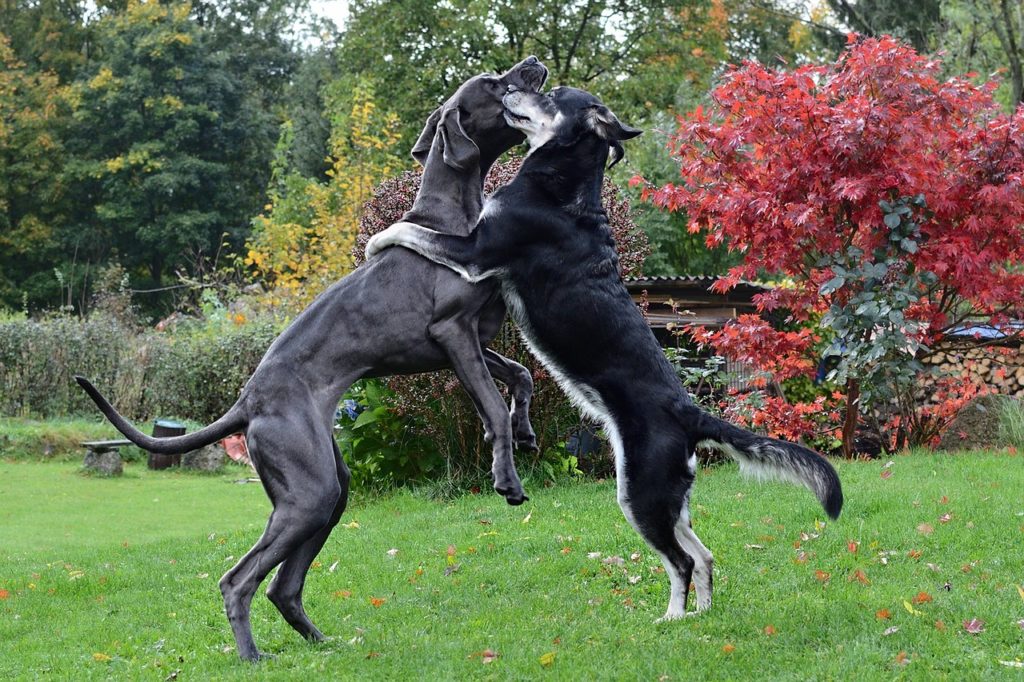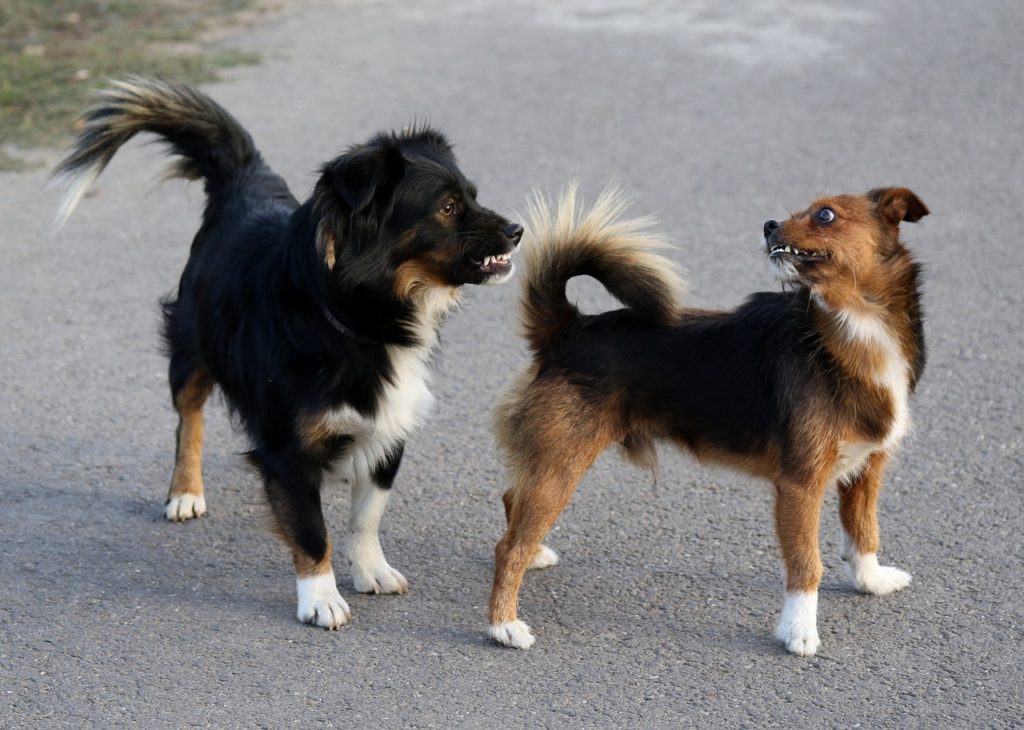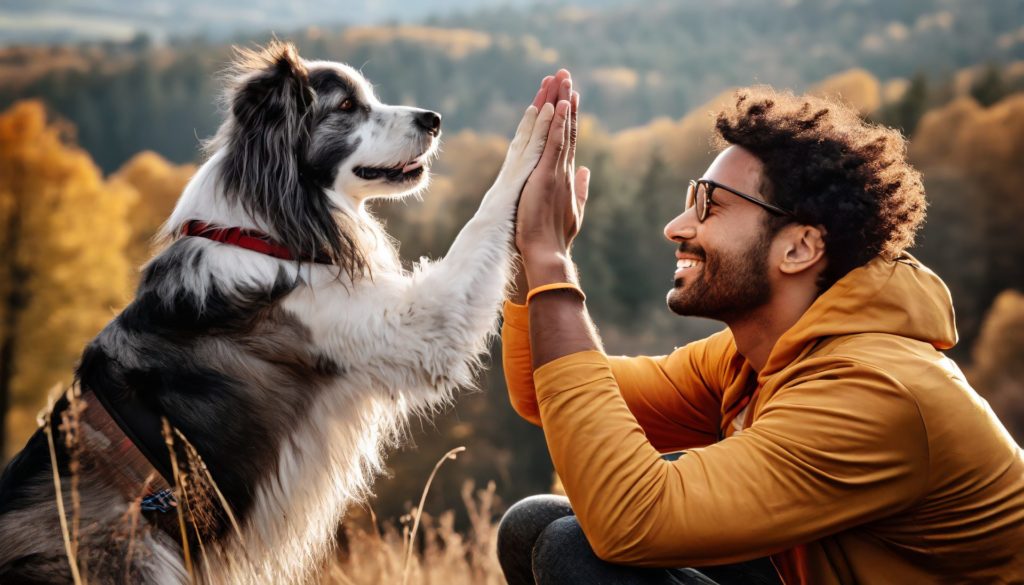
Introducing a New Furry Friend: Navigating the Path to Harmony
Bringing a new dog into your home is an exciting and heartwarming experience. However, if you already have a furry friend who’s used to being the center of attention, introducing a new dog to a jealous dog can be a delicate process.
Jealousy and territorial behaviors are not uncommon, but with the right approach, you can foster a bond between your existing dog and the new addition.
In this blog post, we’ll explore some tips and tricks to make the introduction a smooth and positive experience for everyone involved.
Table of Contents
Gradually Introduce a New Dog to a Jealous Dog
The concept of a gradual introduction when bringing a new dog into a household with an existing furry friend is a crucial aspect of ensuring a smooth and positive transition.
Dogs, much like humans, can be sensitive to change, and the sudden introduction of a new canine companion can be overwhelming for both parties involved.
The gradual introduction process involves allowing the existing dog to familiarize themselves with the scent of the new dog before they physically meet.
This initial step helps reduce the element of surprise and allows for a more controlled and less stressful introduction.
Here’s how you can implement a gradual introduction:
- Scent Familiarization: Before the dogs physically meet, swap their bedding, toys, or other items that carry their scent. This helps both dogs become accustomed to each other’s unique smell. Scent plays a significant role in how dogs perceive their environment and fellow companions, and this preliminary step allows them to begin forming an understanding of the new presence.
- Separation with a Barrier: Use a baby gate or a closed door to separate the two dogs initially. This allows them to see and smell each other without direct physical contact. This controlled environment ensures that they can observe one another’s behaviors and reactions without the risk of immediate confrontation.
- Positive Reinforcement: While they are separated, engage in positive reinforcement activities. Offer treats, praise, and attention to both dogs simultaneously. This creates positive associations with the presence of the new dog, reinforcing the idea that good things happen when the new companion is around.
- Supervised Meetings: Once the dogs seem comfortable with each other’s scent and presence through the barrier, it’s time to proceed to supervised face-to-face meetings. Keep both dogs on leashes to maintain control and intervene if necessary. Allow them to approach each other at their own pace, and observe their body language closely.
- Short and Sweet Interactions: Initially, keep the interactions short and gradually increase the duration as the dogs become more comfortable with each other. Avoid forcing them to interact if they show signs of stress or discomfort. Positive experiences during these early encounters are crucial for building a foundation of trust when introducing a new dog to a jealous dog.
- Repeat the Process: Repetition is key to solidifying the bond between the dogs. Continue with short, positive interactions and gradually increase the time they spend together. Consistency in these interactions helps build familiarity and reduces the likelihood of territorial or jealous behaviors.
By taking the time to introduce the new dog gradually, pet owners can set the stage for a more harmonious relationship between their furry companions.
This approach allows for a smoother adjustment period, giving both dogs the opportunity to build trust and camaraderie at their own pace.

Introducing a New Dog to a Jealous Dog – Neutral Territory
Choosing a neutral territory for the initial meeting between an existing dog and a new furry friend is a strategic and important step in fostering a positive introduction.
Dogs, being territorial animals, can be sensitive to changes in their environment, and introducing a new dog on their home turf may trigger territorial behaviors.
Opting for a neutral territory helps alleviate this potential tension and provides a more neutral ground for the dogs to meet.
Here’s why neutral territory is crucial when introducing a new dog to a jealous dog:
- Minimizing Territorial Aggression: Dogs are naturally territorial creatures, and introducing a new dog to a jealous dog’s established home territory can lead to territorial aggression. By selecting a neutral location, such as a nearby park or a friend’s yard, you eliminate the sense of intrusion on the existing dog’s space, reducing the likelihood of aggressive behavior.
- Reducing Anxiety and Stress: A neutral territory can be less intimidating for both dogs. They won’t feel the need to defend their space, making the introduction less stressful. This is particularly important for the existing dog, who might perceive the new dog as an intruder on their home turf. A neutral setting helps create a more relaxed environment for the initial meeting.
- Neutral Smells and Markings: In a neutral territory, there are fewer territorial markings and scents that might trigger defensive behaviors. This allows both dogs to approach each other without the distraction of marking their territory, enabling them to focus on getting to know each other in a more neutral context.
- Even Ground for Both Dogs: Choosing a neutral location ensures that neither dog has a pre-established claim to the space. This levels the playing field and prevents the new dog from feeling like an outsider. Both dogs can explore the area together, fostering a sense of equality in their initial interactions.
- Positive Associations: A neutral territory provides an opportunity to associate positive experiences with the presence of the new dog. Engaging in enjoyable activities, such as playing or going for a walk, in this neutral space helps create positive associations, making the dogs more receptive to each other.
- Easier Intervention: In the event of any conflicts or tensions during the introduction, it’s easier for owners to intervene and manage the situation in a neutral territory. Having control over the environment is crucial for ensuring the safety and well-being of both dogs during their first meeting.
Opting for a neutral territory when introducing a new dog is a strategic decision that sets the stage for a smoother and more positive interaction.
By minimizing territorial triggers, reducing stress, and providing a level playing field, pet owners can create an environment conducive to the establishment of a harmonious relationship between their furry companions.

Leashed Introduction
A leashed introduction is a crucial component of introducing a new dog to an existing one, especially when there may be concerns about aggression or territorial behavior.
By keeping both dogs on leashes during their first meeting, pet owners can maintain control over the situation, ensure safety, and facilitate a more controlled and positive introduction.
Here are key aspects of a leashed introduction:
- Controlled Environment: Keeping both dogs on leashes provides a controlled environment for the initial meeting. This control is essential to prevent any sudden or aggressive interactions that might occur when dogs are off-leash. It allows pet owners to guide the dogs and manage their proximity to each other.
- Preventing Aggressive Encounters: Dogs, particularly those meeting for the first time, may exhibit defensive or aggressive behaviors. Leashes act as a safety measure, enabling owners to intervene quickly if there are signs of tension or aggression. This preventive measure reduces the risk of physical altercations and ensures the safety of both dogs.
- Observing Body Language: Leashes allow for a safer observation of the dogs’ body language. Pet owners can closely monitor how each dog reacts to the presence of the other. Signs of fear, anxiety, excitement, or aggression can be easier to spot when the dogs are on leashes, enabling timely intervention and redirection.
- Gradual Approach: With leashes, pet owners have the ability to control the distance between the dogs during the introducing a new dog to a jealous dog. This gradual approach is essential, allowing the dogs to become accustomed to each other’s presence without feeling overwhelmed. Owners can gauge the comfort levels of both dogs and adjust the pace accordingly.
- Positive Reinforcement: Leashed introductions provide an opportunity for positive reinforcement. Owners can reward good behavior with treats and praise, reinforcing the idea that calm and positive interactions are associated with the presence of the new dog. This positive reinforcement helps shape a favorable attitude towards the new companion.
- Building Trust: The controlled nature of a leashed introduction contributes to building trust between the dogs. By preventing any negative interactions and gradually allowing the dogs to get used to each other, a foundation of trust is established. Over time, as trust grows, the need for leashes during interactions may decrease.
- Safety Measures: Safety is paramount during introductions, especially if there is uncertainty about how the dogs will react to each other. Leashes provide a means of immediate control, enabling owners to separate the dogs if necessary. This ensures a safer environment for both dogs and the humans involved.
A leashed introduction is a valuable tool for pet owners seeking a smooth and controlled introduction between a new dog and an existing one.
It promotes a safe environment, allows for close monitoring of behavior, and facilitates positive associations, contributing to the gradual development of a harmonious relationship between furry companions.
Balanced Attention When Introducing a New Dog to a Jealous Dog
Balanced attention is a key principle when introducing a new dog to an existing one, particularly when there are concerns about jealousy or competition for affection.
Dogs, like many animals, thrive on routine and can be sensitive to changes in their environment, including the addition of a new companion.
Providing balanced attention ensures that both dogs feel valued, loved, and secure in their place within the family.
Here’s why balanced attention is crucial:
- Preventing Jealousy: Dogs are capable of experiencing jealousy, and the introduction of a new dog can trigger feelings of competition for attention. By giving balanced attention to both dogs, you reduce the likelihood of one feeling neglected or overshadowed. This helps maintain a positive and harmonious atmosphere when introducing a new dog to a jealous dog.
- Equal Affection: Each dog should feel equally loved and cherished. By dividing your attention between the existing and new dogs, you create an environment where both furry friends understand that they hold a special place in your heart. This equal distribution of affection promotes a sense of security and reduces potential jealousy.
- Individual Quality Time: Spending individual quality time with each dog is essential. Engage in activities that cater to their preferences, whether it’s playing fetch, going for walks, or cuddling on the couch. This one-on-one time strengthens the bond between you and each dog, reinforcing their importance in your life.
- Group Activities: While individual time is crucial, group activities that involve both dogs can be equally beneficial. Shared experiences, such as group walks or play sessions, contribute to positive associations and create a sense of camaraderie between the dogs. It’s an opportunity for them to bond with each other under your supervision.
- Consistency in Routine: Dogs thrive on routine, and changes can be unsettling. Maintaining a consistent routine for both dogs, including feeding schedules, playtime, and walks, helps create a sense of predictability. This consistency contributes to a stable environment, reducing stress and potential conflicts.
- Positive Reinforcement for Good Behavior: Use positive reinforcement to reward good behavior from both dogs. Whether it’s obeying commands, displaying friendly interactions, or adapting well to the new situation, acknowledging and rewarding positive behavior fosters a positive environment. This positive reinforcement reinforces desirable behaviors in both dogs.
- Monitoring for Signs of Discomfort: Pay close attention to the body language and behavior of both dogs. If you notice signs of discomfort, stress, or jealousy, adjust your approach accordingly. Understanding the unique needs and cues of each dog allows you to adapt and provide the necessary attention and reassurance.
Balanced attention is a cornerstone for successfully introducing a new dog to a jealous dog.
By ensuring that both the existing and new dogs receive equal affection, individual quality time, and positive reinforcement, you create an environment where jealousy is minimized, and the foundation for a strong and harmonious relationship is established.

Shared Activities for Introducing a New Dog to a Jealous Dog
Shared activities play a vital role in fostering a positive and harmonious relationship between a new dog and an existing one.
Engaging both dogs in activities they enjoy together creates opportunities for bonding, positive associations, and the development of a companionship that goes beyond rivalry.
Here’s why incorporating shared activities is crucial:
- Building Positive Associations: Shared activities allow both dogs to associate positive experiences with each other’s presence. Whether it’s playing fetch, going for walks, or enjoying a group training session, these shared moments contribute to a sense of camaraderie. Positive associations help in creating a harmonious environment.
- Promoting Play and Social Interaction: Dogs are social animals, and play is a crucial component of their interactions. Shared activities provide an outlet for play and socialization, allowing the dogs to engage in positive and stimulating behaviors. Play sessions can help release excess energy and contribute to a more relaxed and cooperative atmosphere.
- Establishing a Common Ground: Engaging in shared activities helps establish common ground between the dogs when introducing a new dog to a jealous dog. They learn to understand each other’s play styles, preferences, and communication cues. This shared understanding fosters a sense of familiarity and can contribute to the development of a strong bond.
- Encouraging Cooperation: Shared activities often involve cooperation, whether it’s walking together on a leash, participating in a training session, or playing with a shared toy. These activities encourage both dogs to work together, fostering a cooperative mindset and reducing potential conflicts.
- Reducing Tension and Competition: By engaging in shared activities, you minimize the likelihood of tension and competition between the dogs. Instead of viewing each other as rivals, they begin to see one another as companions with whom they can share enjoyable experiences. This shift in perception contributes to a more positive relationship.
- Quality Time with Owners: Shared activities provide an opportunity for both dogs to spend quality time with their owners simultaneously. This reinforces the idea that positive interactions occur when they are together, strengthening the bond between the dogs and their human family members.
- Variety in Interactions: Incorporating a variety of shared activities ensures that the dogs have diverse experiences together. This variety keeps interactions interesting and prevents boredom, contributing to a positive and dynamic relationship. Rotate activities to cater to each dog’s preferences.
- Supervised Interaction: Shared activities should always be supervised, especially during the initial stages of introduction. This ensures a safe and controlled environment, allowing owners to intervene if needed. Monitoring the dogs’ behavior during shared activities helps assess their comfort levels and adjust the pace accordingly.
Shared activities are a powerful tool in establishing a positive relationship between new and existing dogs.
By creating opportunities for bonding, positive associations, and cooperative behavior, pet owners can pave the way for a harmonious and enjoyable companionship between their furry friends.
Respect Their Space
Respecting the individual space of both the existing dog and the new addition is a fundamental aspect of a successful introduction and long-term cohabitation.
Dogs, by nature, have their own territories and personal boundaries.
Respecting their space helps minimize stress, reduce the likelihood of conflicts, and promotes a sense of security for each dog.
Here’s why respecting their space is crucial to introducing a new dog to a jealous dog:
- Territorial Comfort: Dogs are territorial animals, and they often have specific spaces within the home that they consider their own. Respecting these territories helps each dog feel secure and minimizes the potential for territorial disputes. This is particularly important during the initial stages of introduction.
- Individual Feeding and Sleeping Areas: Providing separate feeding and sleeping areas for each dog is essential. Dogs may be sensitive to sharing these spaces, and having their own designated areas for meals and rest helps prevent competition and ensures a peaceful coexistence.
- Safe Retreat Spaces: Create safe retreat spaces for each dog where they can go to relax or take a break from interactions. This could be a separate room, a cozy bed, or a designated corner. Allowing them to have their own private retreat promotes a sense of security and gives them a chance to decompress.
- Avoiding Forced Interaction: While it’s important to encourage positive interactions, respecting their space also means avoiding forced interaction. If one dog shows signs of discomfort or seeks distance, allow them the space they need. Forcing interactions can lead to stress and potential conflicts.
- Supervised Exploration: When allowing the dogs to explore shared spaces, ensure supervision. This ensures that interactions remain positive and helps you intervene if any signs of tension arise. Gradually increase the shared spaces as the dogs become more comfortable with each other.
- Introducing Resources Gradually: Introduce shared resources, such as toys or treats, gradually and under supervision. Dogs may be protective of their belongings, and a sudden introduction can lead to possessive behavior. Gradual introductions with positive reinforcement help create positive associations when introducing a new dog to a jealous dog.
- Understanding Canine Cues: Pay close attention to the body language and cues exhibited by each dog. If one dog communicates a need for space through body language like turning away, avoiding eye contact, or retreating, respect those signals. Understanding and respecting canine communication is crucial for a harmonious relationship.
- Consistent Boundaries: Maintain consistent boundaries in respecting their space. Dogs thrive on routine, and knowing what to expect in terms of their territory and personal space contributes to a sense of stability.
- Training for Individual Commands: Train each dog to respond to individual commands. This not only helps in managing their behavior but also allows you to redirect them if needed, ensuring a calm and controlled environment.
Respecting the individual space of each dog is a cornerstone for a successful introduction and ongoing peaceful cohabitation.
It acknowledges their natural instincts, promotes a sense of security, and contributes to a positive and balanced relationship between the existing and new furry companions.

Patience is Key to Introducing a New Dog to a Jealous Dog
Patience is a virtue when it comes to introducing a new dog to an existing one.
The process of building a positive relationship between furry companions takes time, and rushing the introduction can lead to stress, tension, and potential conflicts.
Here’s why patience is key during this delicate transition of introducing a new dog to a jealous dog:
- Adjustment Period: Dogs, like humans, need time to adjust to change. Introducing a new dog disrupts the established routine, and both the existing and new dogs require a period of adjustment. Patience allows for a gradual adaptation to the new dynamics within the household.
- Building Trust: Trust is the foundation of any strong relationship, and it takes time to build trust between dogs. Patience allows the dogs to learn about each other, understand their behaviors, and develop a sense of trust. Rushing the process may lead to anxiety and reluctance to interact.
- Observing Individual Personalities: Each dog has a unique personality, and patience is required to observe and understand their individual traits. Taking the time to learn about their preferences, play styles, and communication cues helps tailor the introduction process to their specific needs.
- Gradual Acquaintance: Patience is crucial in allowing the dogs to acquaint themselves with each other gradually. Pushing for immediate interaction may result in fear or resistance when introducing a new dog to a jealous dog. By giving them the space to approach each other at their own pace, you create a more comfortable environment.
- Preventing Stress and Anxiety: Introducing a new dog can be a stressful experience for both the existing dog and the newcomer. Patience helps minimize stress and anxiety by providing a calm and supportive atmosphere. Rushing the process may heighten tension and result in negative associations.
- Positive Reinforcement Takes Time: Using positive reinforcement to reward good behavior and interactions requires time and consistency. Patience is essential in reinforcing positive behavior through treats, praise, and other rewards. This positive reinforcement helps shape a harmonious relationship over time.
- Avoiding Forced Interactions: Forcing interactions between dogs can lead to negative experiences and potential conflicts. Patience allows for natural curiosity and exploration, with interactions occurring voluntarily. This approach promotes a more positive and willing engagement between the dogs.
- Addressing Behavioral Issues Gradually: If there are behavioral issues, addressing them requires a gradual and patient approach. Whether it’s jealousy, territorial behavior, or other challenges, rushing to correct these issues can create additional stress. Patience allows for a step-by-step resolution process.
- Cultivating a Positive Environment: Patience contributes to the creation of a positive environment. By maintaining a patient and understanding attitude, pet owners set the tone for a calm and supportive atmosphere that encourages positive interactions and relationships.
Patience is a key ingredient in successfully introducing a new dog to a jealous dog.
It allows for a gradual and positive adjustment, promotes trust-building, and fosters a harmonious relationship over time.
By embracing patience, pet owners create an environment where both furry companions can thrive and coexist peacefully.
Conclusion of Introducing a New Dog to a Jealous Dog
Introducing a new dog to a jealous dog requires patience, understanding, and a thoughtful approach.
By gradually introducing them, maintaining a neutral environment, and respecting their individual spaces, you can pave the way for a strong and loving relationship between your dogs.
Remember, the key is to create an atmosphere of acceptance and positive reinforcement, allowing your furry family members to thrive together.





